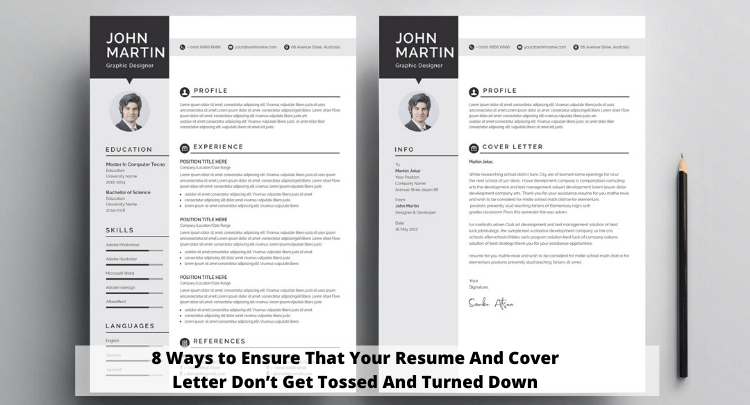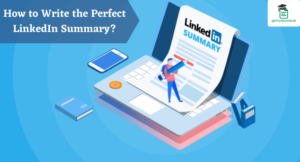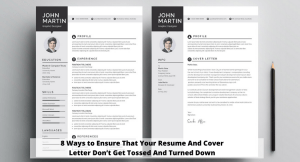This is an age where digital platforms and means are creating a revolution. People everywhere have their own personal profiles and portfolios on the internet. The digital boom has given them the power to create video bios and presentations for themselves and the job application process seems to have become more influenced by such additions. However, two things without which applying to a job look incomplete are Resume and Cover Letter.
No matter how much technology advances, want from the recruiter for a Resume and Cover Letter is never ending! While these are your key requirements to be invited for an interview the versions have seen several up-gradations. Newer strategies have replaced older ones in the resume and cover letter building tips. If you are using a resume or a cover letter which is a few years old, chances are you wouldn’t be invited for the interview leave alone landing up with the job!

Also Check:
- How to Answer About “Where Do You See Yourself in the Next 5 Years in an Interview?”
- How to Customize your Cover Letter according to the Job?
- How To Crack Video Interviews Amid Pandemic?
Here are 8 indispensable tips to bear in mind while updating your Resume and Cover Letter which ensure that your application material sees the light of the day.
8 Tips For Effective Resume And Cover Letter Writing
1. Stop Including Every Minute Detail
Don’t have to make the resume a diary by including things like your first employment details. Tailor your professional resume by mentioning the most relevant of your accomplishments for the job applied. Include your voluntary experiences too apart from the paid ones if it sounds relevant. The resume is no longer a repository of your work history or skills and achievements. Work history or education history dating back to 15 or 20 years and further can loom you towards Age Bias! Sad but true!
2. No Objectives Please
An objective which state, ‘what you look forward from the employer’, is good to know and not need to know. Employers these days want to view result-oriented profiles with achievements shown to back up the track record. In those 10 seconds that a hiring manager spends reading your resume, they would only analyze whether you are the solution to their problems. Appear powerful to them and put forward the best of your strengths!
3. Don’t Use Flowery Words Without Backup
Stop using flowery words on your CV like Team-Player, Result-Oriented, Excellent Communicator, Self-Motivated etc. without proper backup. Your accomplishments should describe your application and not those buzzwords, which anyway are overused in every resume. These words are of no value add to your resume. Instead, your accomplishments with your previous job roles could prove credible for you.
Invest in techniques which could make your resume more results-based. Example: “Led in a 13 FTE project for a 6-year period time frame for 13 countries under Asia Pacific for my previous project” or “Transformed the Tax Receipt Manual Process into a system-run automatic process which reduced the cycle time and saved 1 FTE of overall work.”
4. Functional Resumes Are No Longer In
Functional resumes which keep the competencies together and minimizes the dates of employment are no longer in. Functional CV’s can camouflage gaps in your work history which is not preferable by the hiring managers these days. Chronological resumes in reverse which transparently highlights your career changes and gaps are preferred by the recruiters.
Gaps should be owned and covered briefly about in your cover letter. Part-time gigs or voluntary experiences can also be lumped together showing that you have been productive. However, avoid giving too many details like dates/months of employment. Mention only the years of employment and gaps of about 6 months to an year get covered automatically. Also, avoid showing every job that you hopped if irrelevant.
5. Hobbies or Skill Lists Can Go to LinkedIn
Don’t keep too much of information anywhere on your CV. Only great stuff should appear on it not the good or ok ones. Long strings of bullet points or skill lists or hobbies can be put away on Linked In. Only four or maximum five bullet points per role should be enough and anything more than that can be too much for them to handle.
Hobbies like ‘love singing, dancing, watching TV, cooking or traveling’ can be dropped. But ones like ‘Played for India at National Level for Cricket Under 19’ or ‘Climbed Everest’ should stay. For everything else use LinkedIn and the custom LinkedIn URL should be fitted on your resume for your hirers to see.
6. Show Them You Got References
It is a must to include your references, at least three of them should work. Also, give their social media handle URL’s on the resume so that they can be checked for online presence.
7. Do Not Appear Tech Un-Savvy
Most CV’s these days have mention of programming languages or courses like PMP and Prince 2 to show that the candidate is technically sound even when applying for non-technical roles. While this certainly grabs eyeballs do not mention it unless you have practical knowledge of the technical skill. It is better to avoid mentioning details which you have no experience of rather than putting up a blank face later in the interview.
Also, some people mention things like MS Office Skills etc. on the resume just to fit the bill. This should definitely be avoided because it looks really technically un-savvy. MS-Office is the bare minimum requirement which even school going children are aware of these days.
8. Tailored Cover Letters
Cover Letters are read after the Resume and sometimes left unread too. However, nothing should deter you from creating one which displays your confidence, personality, strengths, skill sets, accomplishments and value addition if any.
Show your employer that you are wanting to go that extra mile in creating one for the application process. Be brief and keep it to four paras at the max while customizing it as per the company and role that you apply for. Cover Letters can land you with a job if written as per the current trends.
Happy Job Hunting!!





